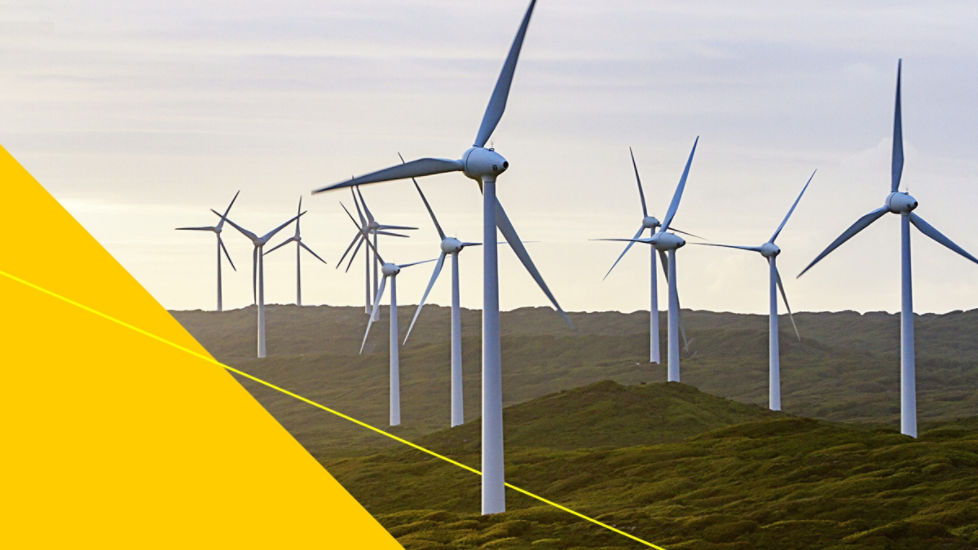Living in a big Australian city can make it easy to feel removed from the impacts of climate change but nothing could be further from the truth. "The built environment accounts for 37% of global carbon emissions, without even including those associated with transportation around cities and the built environment," says Julie Hunter, General Manager Financial Institutions Governments & ESG Risk, Institutional Banking and Markets at CommBank.
Hunter stresses that net zero is only attainable with strong collaboration across industry, banks, governments and regulators. "Companies that recognise the intersections and interdependencies across those different players and the supply chain – and lead in addressing these challenges – will realise economic and reputational benefits," she says.
What does a net-zero city look like?
"The first thing we think about is being able to power everything with renewable energy," says Courtenay Smith, chief financial officer at Mirvac. "Then there's energy-efficient construction for both institutional buildings and homes, integrated transport to allow a seamless flow, green spaces, waste management and water innovation, and the circular economy principles of reuse and recycle. You also need community engagement and collaboration to bring cities to life. Finally, and maybe the most important but also the hardest, is resilience and adaptation: cities – and indeed other places – need to be able to adapt to climate change."
In 2023, Mirvac's Heritage Lanes commercial tower at 80 Ann Street, Brisbane, became the first in Australia to be certified with the maximum six stars under the internationally recognised Green Star Building ratings. Heritage Lanes' smart building technology includes collecting more than 90 billion data points daily, allowing it to be operated in line with real-time conditions. That sounds futuristic – but it's already home to offices, eateries and impressive works of art.
"It's highly energy efficient with 129 kilowatts of solar energy and louvred windows on the ground floor allowing that space to breathe. There are 100 kilolitres of water storage and we used lower-carbon concrete and recycled steel in construction," says Smith. Add to that, 100% native plantings – almost all sourced from south-east Queensland's bioregion – and end-of-trip facilities, including 665 bike racks and 66 showers.
Futureproof construction materials
How we build our cities is a cornerstone of reducing emissions and that includes developing lower-carbon materials with a smaller production footprint. "Decarbonisation is a key part of our innovation pipeline and it's what our customers are asking for," says Felicity Lloyd, chief sustainability officer at Adbri, a leading materials manufacturer with multiple cement and concrete plants, lime manufacturing facilities and quarries across Australia. "For nearly two decades, we've been reducing the carbon footprint of our products by using alternative, high-biomass fuels and demolition waste, and we also look to create. Building on more than 15 years' worth of product development, we've launched our Futurecrete low-carbon concrete range and EvoCem, like-for-like lower-carbon cement."
Victoria's Yarra tram tracks renewal was an early adopter of Futurecrete. By using 25% Futurecrete in the project it was able to reduce about 270,000 kilograms of CO₂ equivalent per year of supply, compared with conventional concrete.
A long-term vision for a new way to move
Major infrastructure projects are quite advanced in many Australian cities and Peter Tompkins, CEO of Downer Group, says that it's a unique opportunity for governments to set sustainability requirements in the procurement process.
"It allows innovation in the design of transportation projects, such as the high-capacity metro trains [like] Sydney Metro," says Tompkins. "We're delivering locally manufactured High Capacity Metro Trains (HCMT) for the Melbourne rail network, where the standards were set around local industry participation. They also required lowering the energy intensity, which meant reducing the weight of the train and then in the depot, looking at ways to construct things for a whole-of-life lower cost and, therefore, greener footprint."
Tompkins says collaborating closely with financiers and the state government has been key to the development of these projects. "They influence procurement and we see more and more of that happening to ensure these major, life-changing infrastructure projects are sustainable."
We're all in this together
"Collaboration is key to achieving net-zero cities; we can't work in our own silos – we just won't get there quickly enough," says Belinda Bradberry, head of sustainability and ESG at Plenary, a leading global infrastructure investor, developer and manager. "We draw together consortia of builders, operations and maintenance specialists, and debt and equity finance to put together large-scale public infrastructure projects to deliver to governments across the hospital, education, accommodation and transport sectors."
Bradberry agrees that the "whole-of-life approach" is essential. "We're not just designing and building something and walking away. With key targets around 2035 to 2040, a lot of what we build has a lifespan beyond that. A good example of our cross-value-chain collaboration is Sydney Metro – Western Sydney Airport. Our performance objective includes taking cars off the road and achieving mass transit but our ambition is beyond that in terms of contribution to net zero."
Plenary is working with supply chain partners to introduce a range of lower-carbon construction methods and advance renewable energy generation for the large project, which will be moving people for many decades to come.




